Hello friends
This was the extraordinary light that greeted me a few mornings ago.
There was not a breath of wind. The sun had barely touched the night-time chill. A few drops of rain glittered in the low, misted sun and the loch was a sheet of bronze, shading faintly into pale blue and deep umber. Or was it gold? And was that a tinge of pink, too, reflecting off the cloud?
What colour is water anyway?
I can’t quite get it right in the studio. I lean too much into blue.
I can’t quite name it in writing either. The loch is black is pewter-grey is purple-brown is mist is grey is white is a sheet of gleaming bronze is a cauldron of gold is hammered silver. The sea is blue-green-grey-black-brown-silver-pink-jade-white-cream-navy-azure-purple-lavender-apricot.
I can never seem to quite nail it. As soon as I get close to the colour of water it shifts again.
This, of course, is part of its fascination.
I’m not alone in finding water a tricky subject. James Joyce described the colour of the sea as snot green. Byron went for a plain dark blue. Homer, famously, said nothing about a blue sea in either the Iliad or its companion piece the Odyssey. Instead, a ‘wine-dark’ sea appears over a dozen times in these two epic poems of islands and voyages:
Then Achilles, in tears, moved far away from his companions, and sat down on the shore, and gazed out over the wine-dark sea.
(Iliad, 1. 351-353, trans. Stephen Mitchell)
Water, water everywhere, but not a drop of blue.
Nor is the sea blue in ancient Hebrew or Assyrian texts, in the Icelandic sagas, the Koran, the Hindu Vedas or the Mahabharata.
Blue is rare in nature, apart from the sky of course. There are no naturally occurring blue foods and few blue creatures. One theory suggests that because of this lack, humans didn’t need a name for the colour and, lacking the name, could not see it.
Does not being able to name the colour blue really mean it is unseeable?
Researcher Jules Davidoff asked members of the Himba people of Namibia, who use the same word for both blue and green, to help him find out. When shown eleven green squares and one blue square, the Himba could not easily pick out the one that was different. However, the Himba have more names than English speakers for green. When shown eleven green squares with one a slightly different hue from the rest, the results were reversed. They identified the rogue green while English speakers missed it. A blind spot of language, then, not of the eyes. But a kind of blindness nonetheless.
But maybe it’s to do with how we think of words. In written languages, definitions become fixed, pinned down in dictionaries like so many dead butterflies. Oral cultures would surely find this peculiar. Spoken meaning is a living thing that occurs between speaker and listener. The liquid flow of speech is more like a trembling reflection of the world, like the shimmer of light bounced off a shifting sea, than a set of fixed correspondences.
In her wonderful lecture an “Interview with Water”, poet Alice Oswald ponders this question. She offers for our contemplation a word Homer often uses instead of blue: ‘porphyreum’, the colour of Odysseus’ gown.
It gets translated as purple, but purple is a settled colour, whereas Homer’s word is agitated. It derives from the sea verb ‘porphyreo’ which means ‘to roll without breaking’, so it is already a fluid word, a heaped-up word, a word with underswell, not a pigment but an emanation from the nature of water. To get a sense of ‘porphyreum’ you need to see the sea in it. And for Homer the sea is inhuman, full of strange creatures, mist-coloured, unploughable..unfenced.
To see this colour Oswald says:
You will have to swim out into the unfenced place, a place not of definitions but of affiliations…..a dark-light word, an adjective for edgelessness, a sea-word, used also of death, smoke, cloth, mist, blood. Between bluish-purple and cobalt-mauve.
It appears mid-ocean, when the wind perhaps makes a network of back-blowing glitters that the underswell moves sideways, as when a big sea swells with noiseless waves. It is used of the heart, meaning his heart was a heaving, not-quite-broken wave. It indicates a surface, but suggests a depth, a meditation of blackness or noiseless sheen, a sea-creature, a quality of caves, any inlet or iodine, or shaded stones, a type of algae or rockfish, anything excessive or out-of-focus or subliminal. For example, a swimmer seen from underneath, a rotting smell, a list of low sounds, and evening shadow or sea-god, a whole catalogue of simmering grudges, storms, waves and solitudes, or deep water, including everyone who has drowned in it.
To be purpled is to lose one’s way or name, to be nothing, to grieve without surface, to suffer the effects of sea-light, to be either sleepless or weightless and cut off by dreams, to find yourself in the silence underneath an overhanging wave.
That, or thereabouts, is the colour of a bluish, violet, ultramarine gown.
The North Atlantic is seldom blue. The North Sea almost never. It’s mostly grey, sometimes silver, black in its depths, churned to jade and bottle-green and white froth where it tumbles over rocks.
I’ve watched the light shift over the sea through the few hours of Orkney’s winter daylight, pale gold shading into blue-grey-green, royal blue, navy, and black, passing through improbable and fleeting moments of apricot, coral, lavender, shifting instant by instant through colours that resist all attempts at fixing with a name.
When the writer Rebecca Solnit contemplates the waters of her home city of San Franscisco she notices:
Sometimes the whole sea looks like a mirror of beaten silver, though it’s too turbulent to hold many reflections; it’s the bay that carries a refracted sky on its surface. On the most beautiful days, there are no words for the colours of San Francisco Bay and the sky above it. Sometimes the water reflects a heaven that is both gray and gold, and the water is blue, is green, is silver, is a mirror of that gray and gold, catching the warmth and the cold of colours in its ripples, is all and none of them, is sometimes more subtle than the language we have.
Solnit observes:
The names of the colours are sometimes cages containing what doesn’t belong there, and this is often true of language generally, or words like woman, man, child, adult, safe, strong, free, true, black, white, rich, poor. We need to use words, but use them best when knowing they are containers forever spilling over and breaking open. Something is always beyond.
The colour of the sea shows us the limits of language and also the limits of our seeing, shaped as that is by the words we use to name things. It shows us how words both reveal and conceal the world
Water lies at the limit of words. It overflows all our containers. It spills out from around the word ‘water’ and it has no name.
In the studio this week
Thanks to the MacRobert Trust Award I received last month I’ve been able to restock on some art materials and especially to invest in some new paint colours with quality pigments that give a real intensity of colour (paint is eye-wateringly expensive!). I’ve been venturing into violets and purples, pigments that were simply not available before the mid 19th Century. They can be really overpowering, but I’m enjoying the challenge they present. Add some gold leaf that a friend gave me ages ago but I’ve never really used before, and I’m liking what’s emerging…a hint of porphyreo, perhaps?
I’m still working on this one. I wanted to blur the horizon as if in a fog but the pearlescent ink’s dried a bit too heavy so my next task is to knock it back and soften it. Here’s a close-up:
I’ve also been preparing quite a few new bigger panels, working up the washes of acrylic that will lie underneath the layers of line drawing that come next.
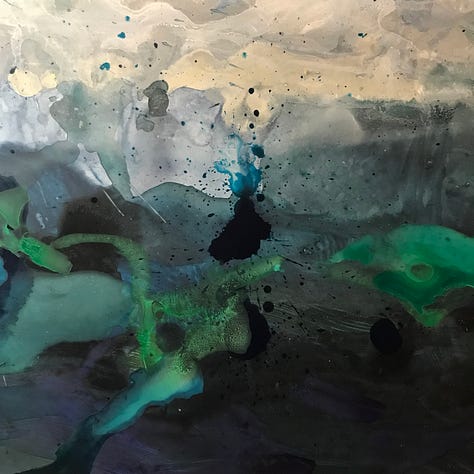
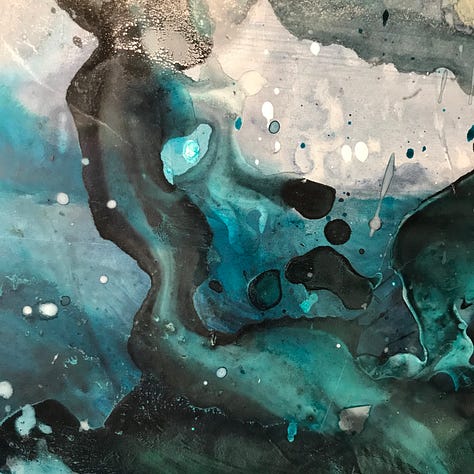
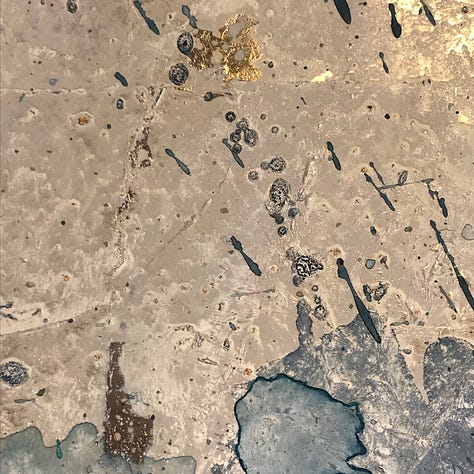

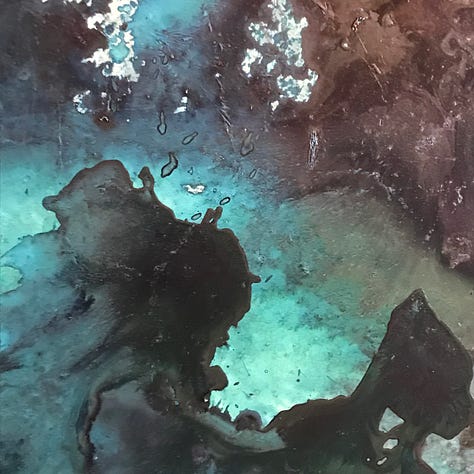
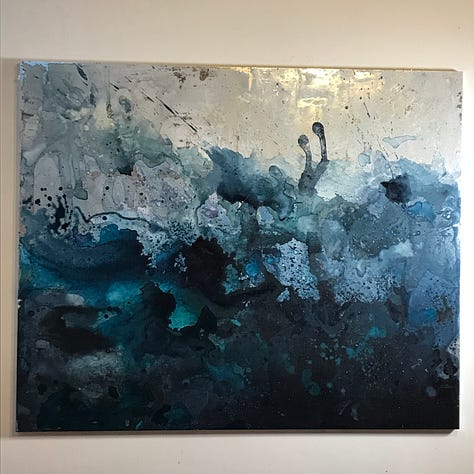
As ever, thank you for reading! If you know someone who you think might enjoy receiving The Life Boat weekly do feel free to share this post with them.
Warm wishes from Orkney!
Sam
The Clearing
“The Clearing” is a memoir about ‘spaces between’ and what may be learned in them. As I clear the family home after the death of both my parents, the memories held there prompt reflections on my family’s flawed strategies for coping with my mother’s mental illness, the isolation of my father in caring for her, and how these relationships shifted as my pa…





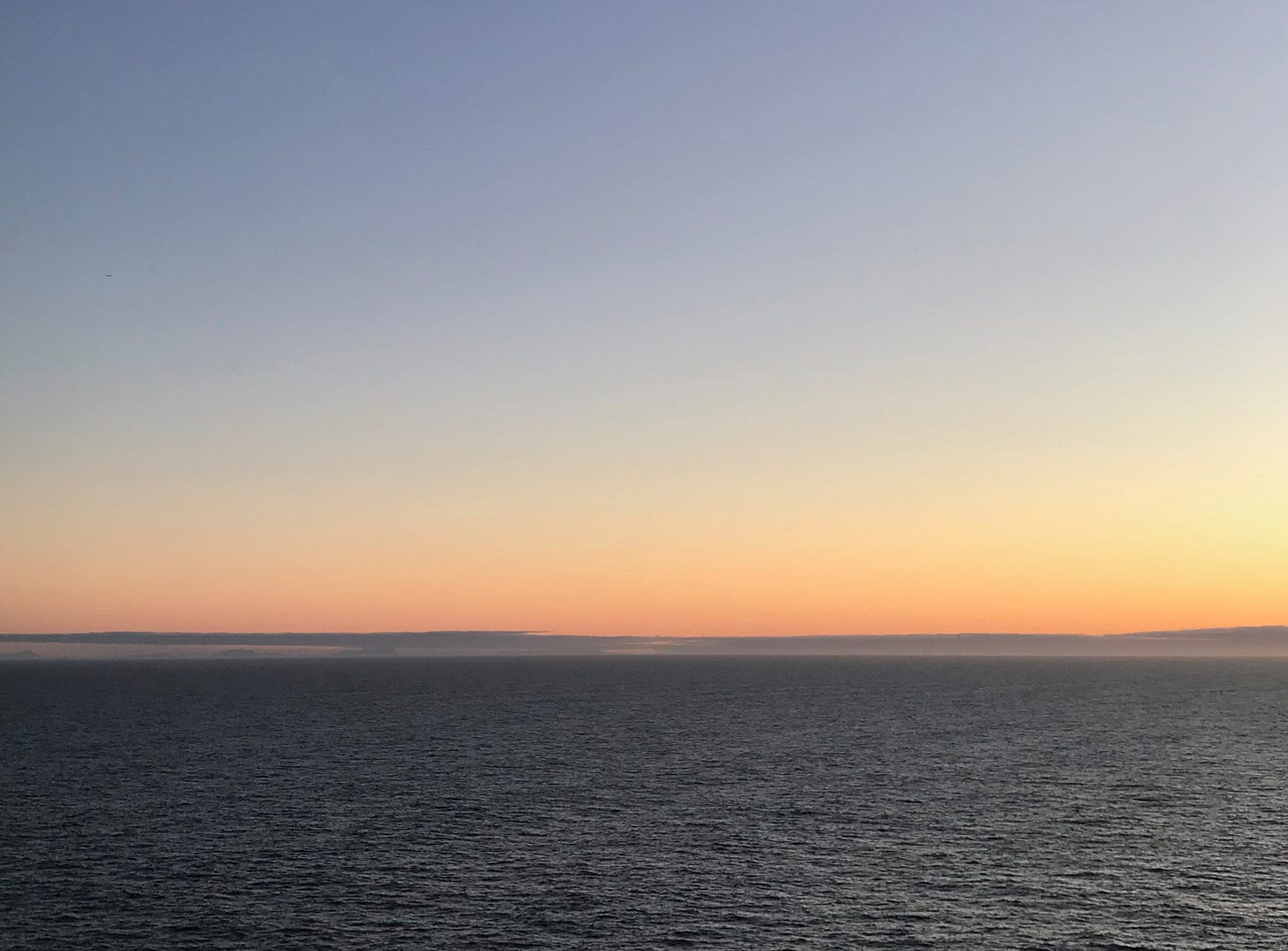
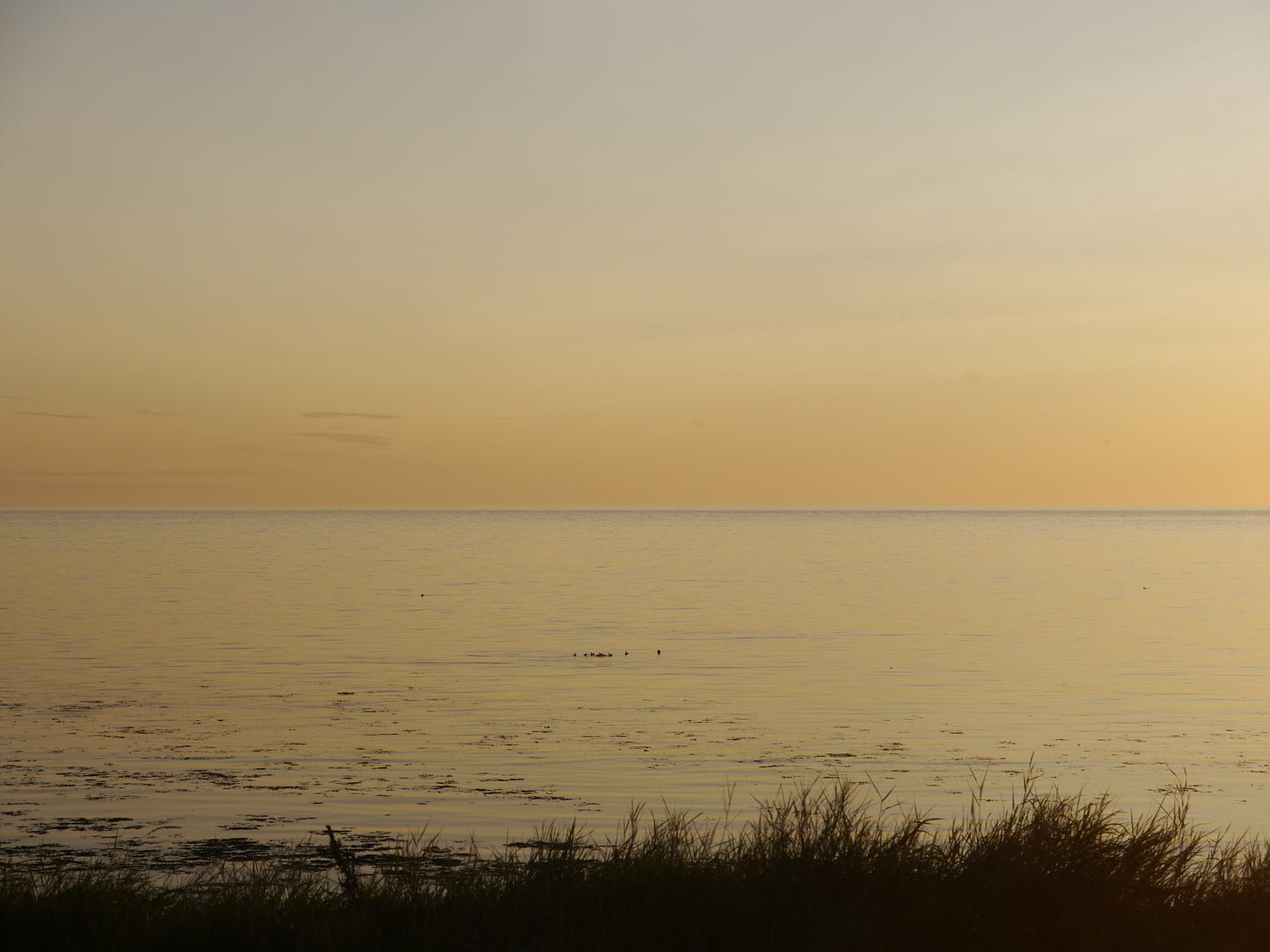
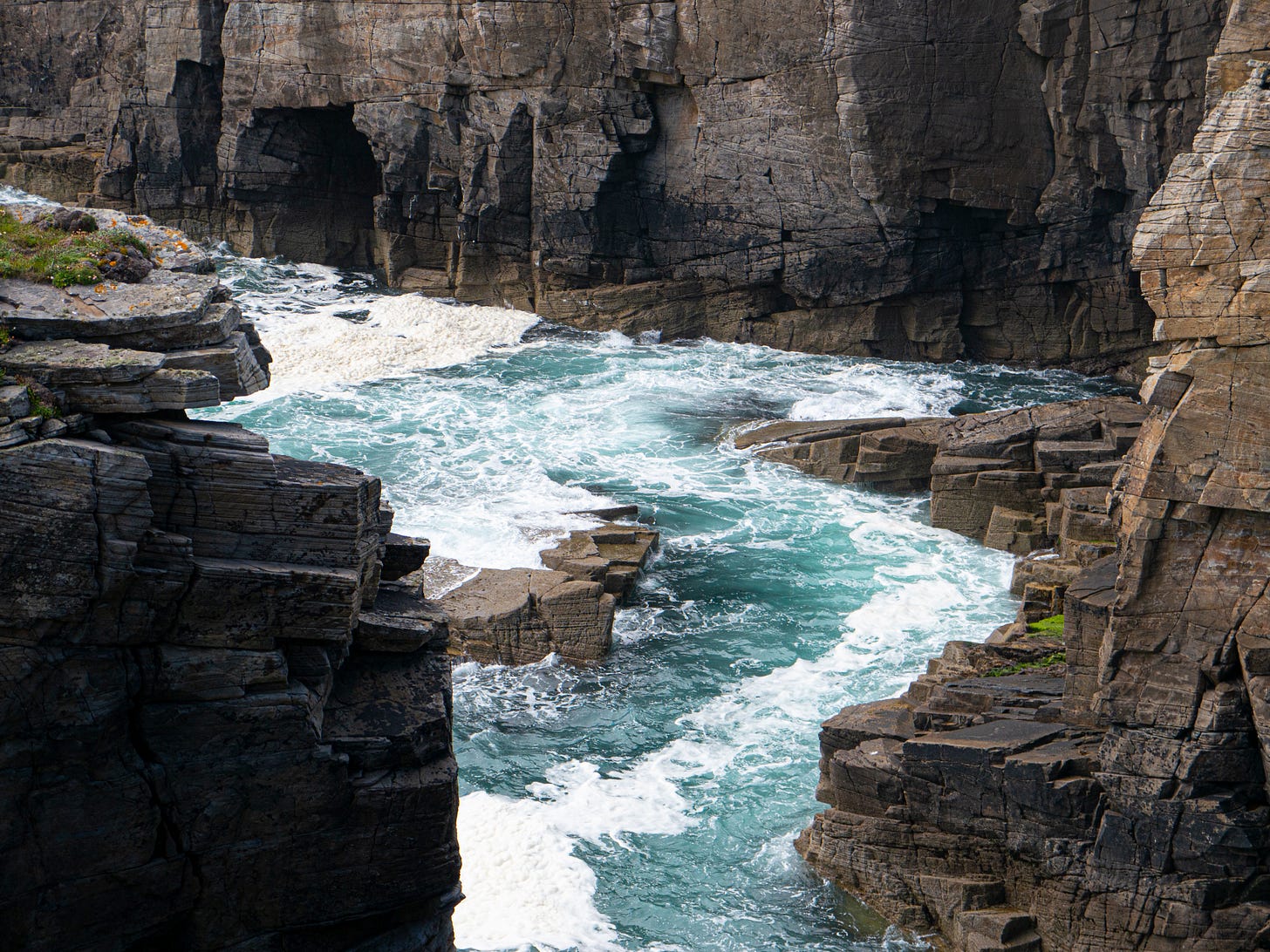

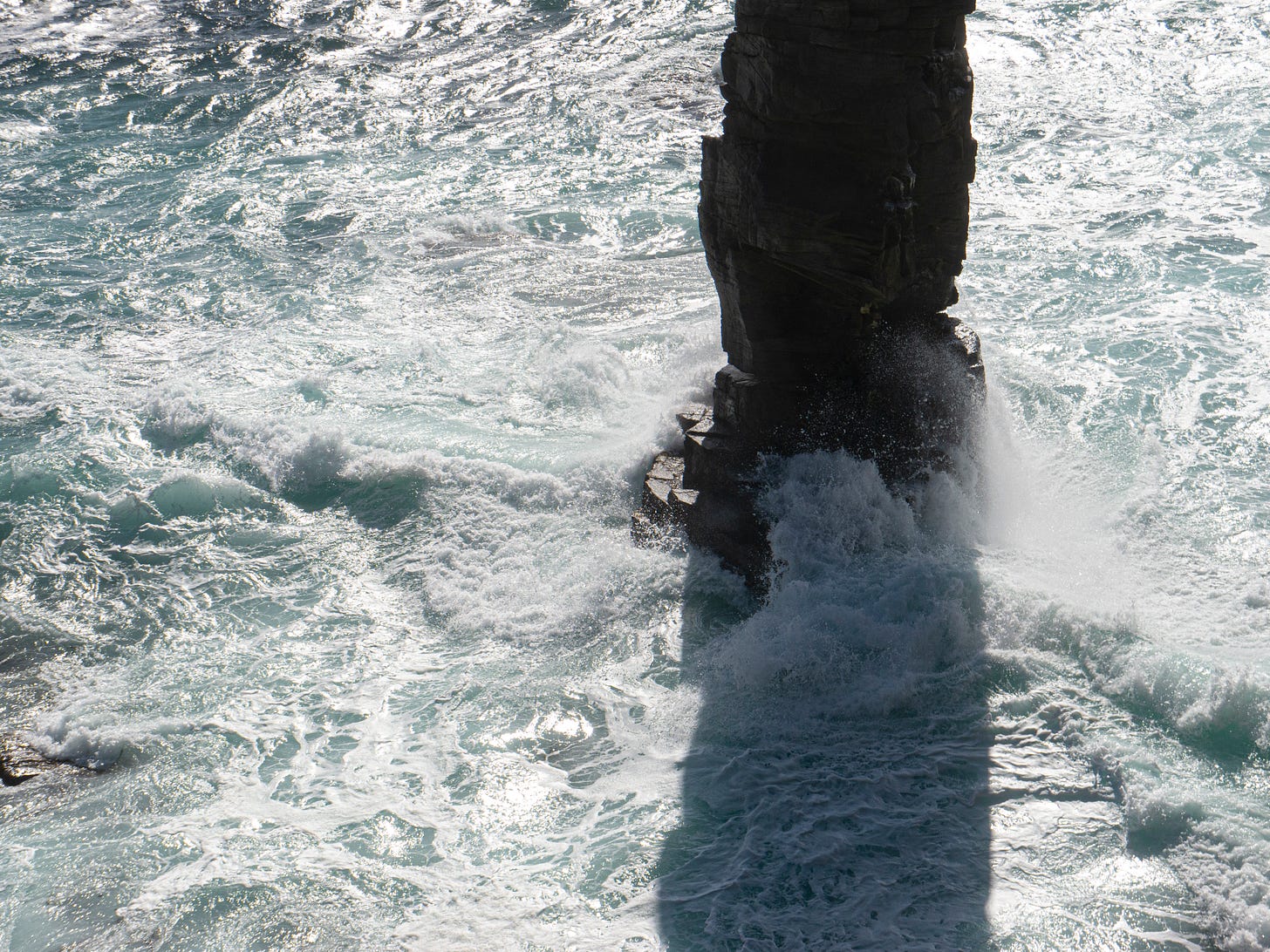
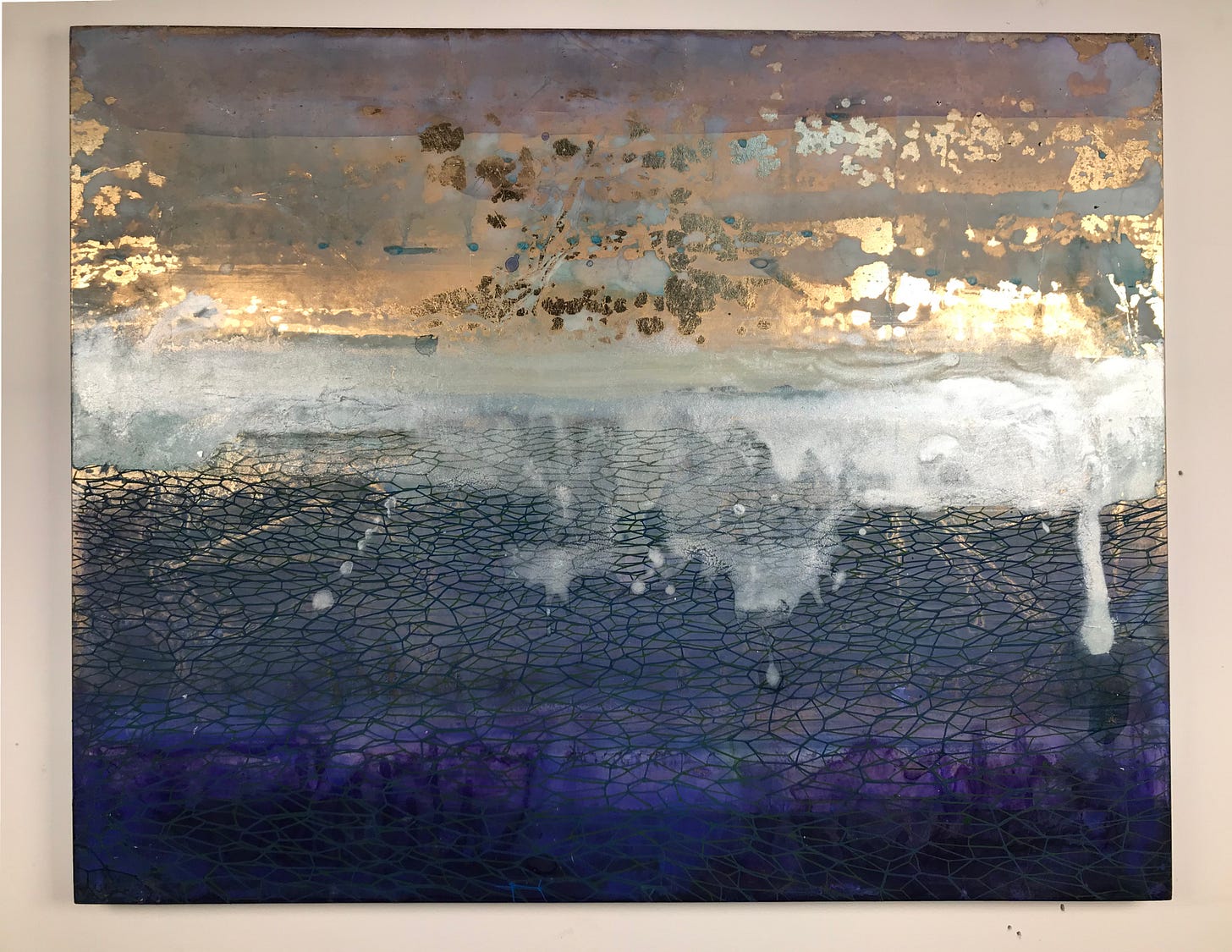
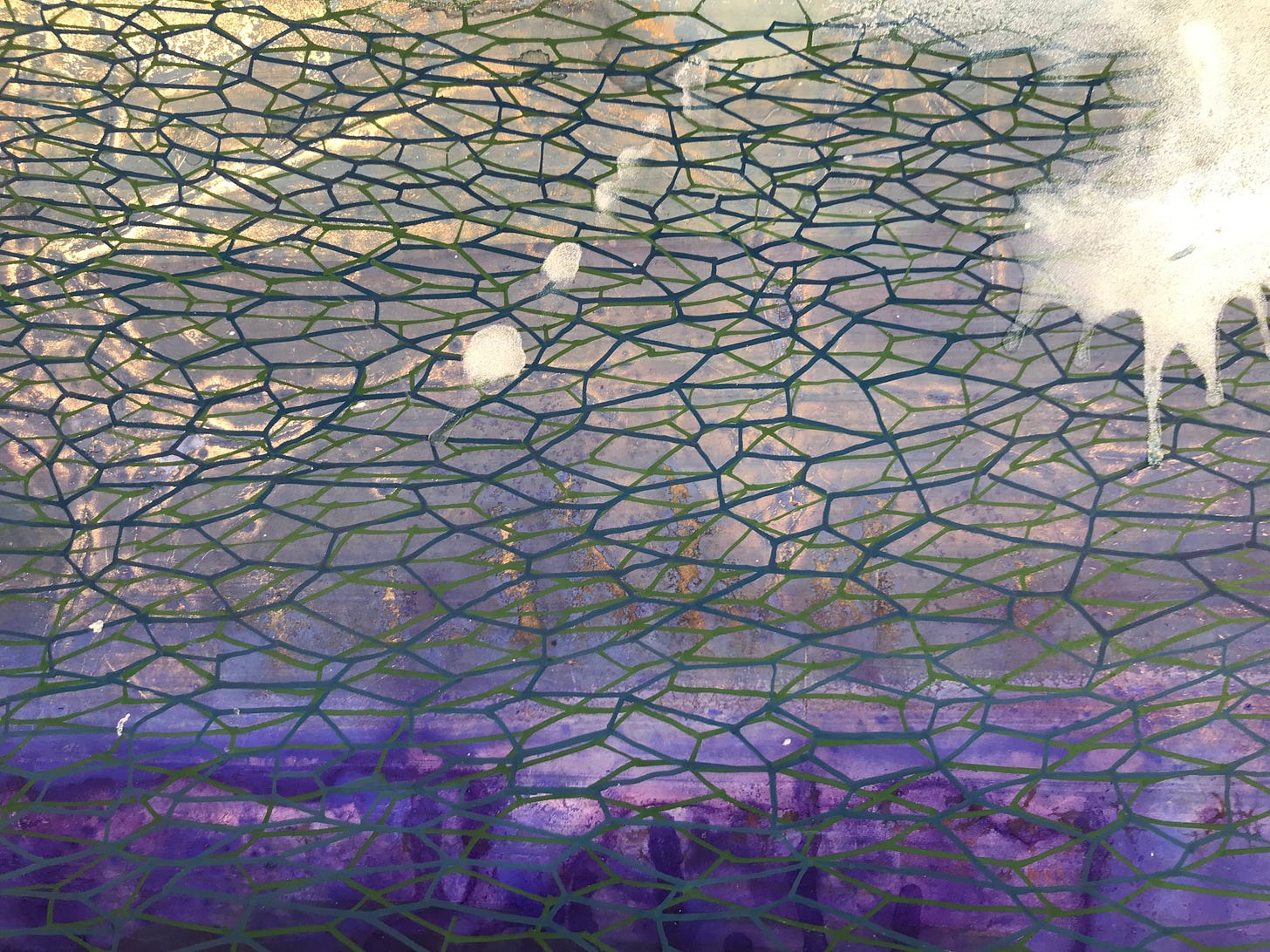
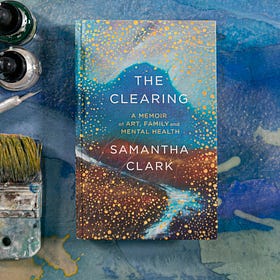
Living so far from any ocean or sea as I do, I have forgotten the many different hues this force of nature takes. I content myself with rivers and brooks, a lake or pond. These too take the colours of the day, transform them to and fro, but one has to calculate angles, time, position, not always possible when edged by a field with a bull for example...
This essay is filled with an enviable deliciousness of positioning to not only see but to be overwhelmed, I loved every word! Thank you for sharing...
Essays like this one are why I adore Substack. Thank you so much for this